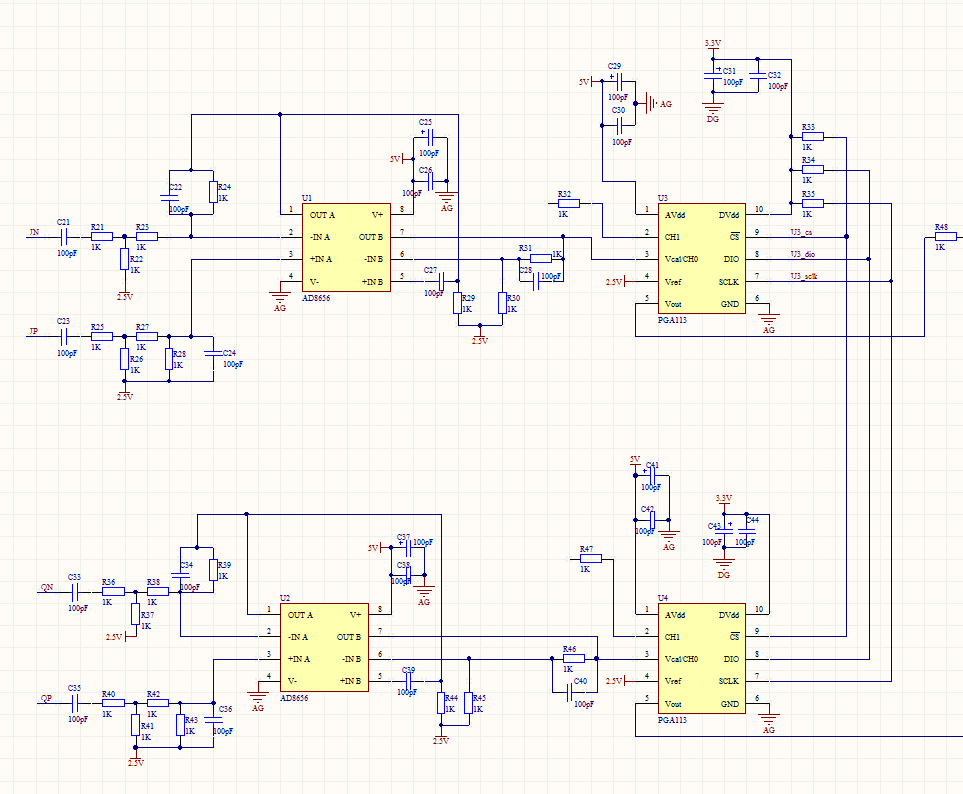#define PGA_SET_SCL() GPIO_SetBits(GPIOI, GPIO_Pin_2) // PI2-> U3_sclk
#define PGA_CLR_SCL() GPIO_ResetBits(GPIOI, GPIO_Pin_2)
#define PGA_SET_CS() GPIO_SetBits(GPIOI, GPIO_Pin_0) // PI0-> U3_cs
#define PGA_CLR_CS() GPIO_ResetBits(GPIOI, GPIO_Pin_0)
#define PGA_SET_DIO() GPIO_SetBits(GPIOI, GPIO_Pin_1) // PI1-> U3_dio
#define PGA_CLR_DIO() GPIO_ResetBits(GPIOI, GPIO_Pin_1)
void PGA113_Write(u16 ads_dat) //MODE 1.1
{
unsigned char i;
PGA_SET_CS();
PGA_SET_SCL();
PGA_CLR_CS();
DELAY(0x100);
PGA_CLR_SCL();
DELAY(0x100);
for(i = 0; i < 16;i++)
{
PGA_SET_SCL();
if(ads_dat&0x8000)
PGA_SET_DIO();
else
PGA_CLR_DIO();
DELAY(0x100);
PGA_CLR_SCL();
ads_dat <<= 1;
DELAY(0x100);
}
PGA_SET_SCL();
DELAY(0x100);
PGA_SET_CS();
}
int main(void)
{
PGA113_Initiate();
while(1)
{
PGA113_Write(0x2A40); //0x0010 1010 0100 0000
}
}
Yellow is SCLK, blue is DIO.The output waveform cannot be amplified,why?










